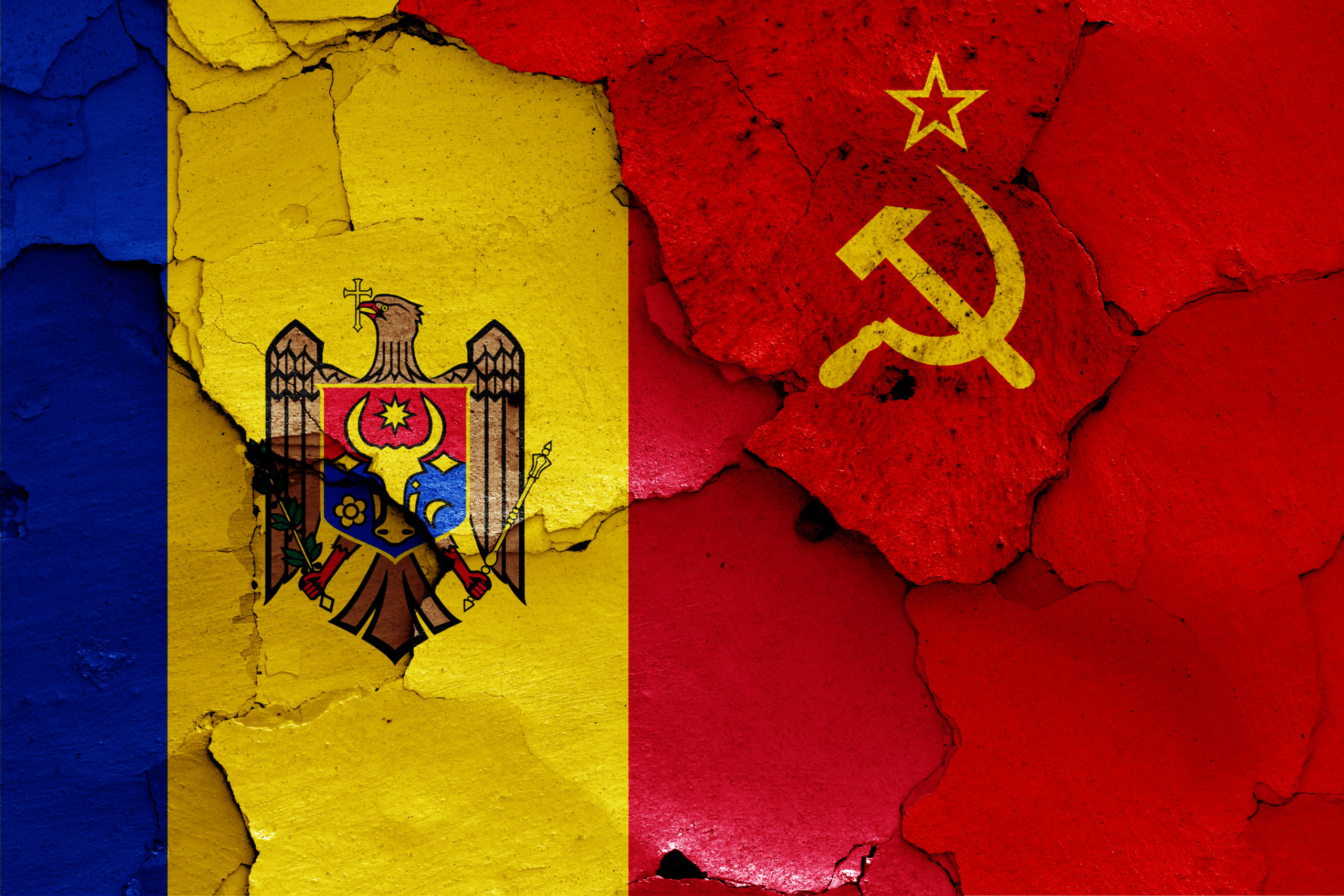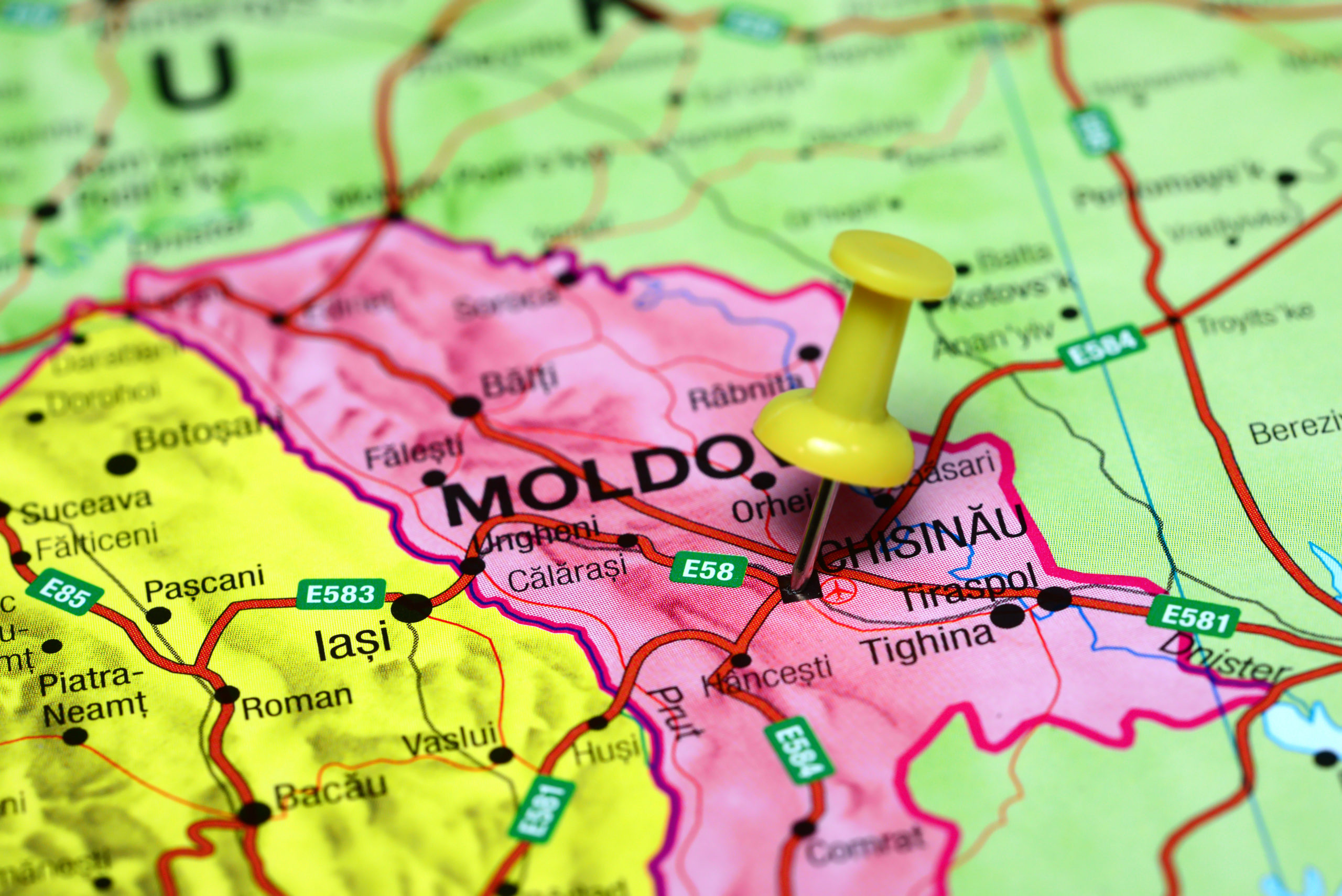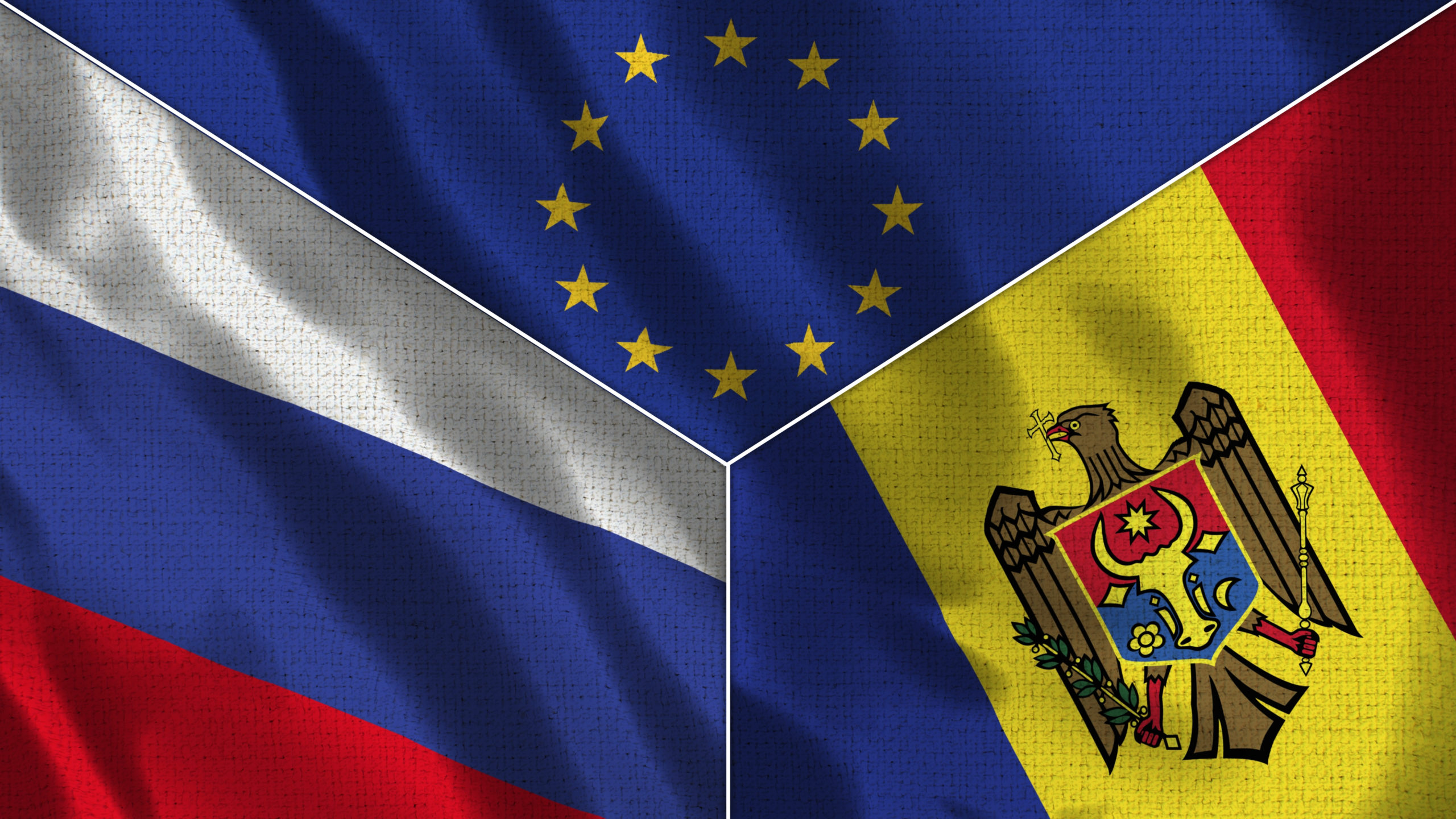Moldova: Between the EU Membership and the Fear of Russian Invasion
Alexandra Tóthová
Before February 24th 2022, Moldova was one of the least discussed countries in Europe. After the Russian invasion of Ukraine, one of the poorest countries in Europe regained the spotlight and many started raising the question of whether it will be the next on Russia`s plate. These are legitimate concerns, and Moldova may be Vladimir Putin`s next direct target.
In March, Belarussian President Aleksandr Lukashenkoappeared to broadcast Russia`s plan to invade Moldova. Suppose the invasion had happened a few years ago. In that case, Moldova could serve as a vassal state for the Russians, similarly to Belarus under Lukashenko nowadays, to launch another attack on Ukraine from a different direction. However, Maia Sandu, who won the presidential elections in 2020 and replaced Igor Dodon (who was highly sympathetic towardsMoscow), set the country’s course towards Western integration. The snap parliamentary elections in 2021 cemented the course as the pro-Western parties won. The government, the parliament and the president are currently working jointly towards the same goal: membership in the European Union.
Moldova gained the EU candidacy status on June 23rd 2022, receiving the green light for its European goals. The unprecedently swift decision of the EU was crucial in the midst of the war in Ukraine. This was a clear signal that Moldova was moving out from the Russian orbit toward membership in the EU, and the EU welcomed its efforts. The results of the last elections in Moldova are signaling strong support for EU membership among the population, but pro-Russian forces will exploit the current unfavorable global socio-economic situation due to the economic downfall during the pandemic for their hybrid warfare. Whether the current course towards membership will remain is questionable, but the political stability for the next two years can bring many positive changes, which can secure support for the pro- EU government in the future.
The population remains politically divided between the East and West. President Sandu banned the Russian ribbons of Saint George as well as the prowar signs „Z“ and „V“. Indeed, pro-Russian voices have amplifiers deeply embedded in the Moldovan society, namely the Orthodox Church and the media. Around 90% of the churches in Moldova are under Russian Orthodox influence, while half of all media is owned by the Russians or pro-Russian groups with an extensive track record from the past decades of working towards a pro-Russian narrative. Although their voices are not strong yet, as the population opposes the war, the sympathy towards Ukraine can change due to high inflation and socio-economic hardship. The future course of the country will rely on the new elites and new politicians. And they can rely on vast international support, including financial one. Pro-Russian attitudes are present not only in Transnistria but also in other parts of Moldova too, namely in Gagauzia. Russian state media remains dominant. Although the Moldovan government is working relentlessly to reform the country, there is the elephant in the room: Transnistria. The breakaway state effectively blocked and continues to block Moldova from any pursuit of EU or NATO membership. Would the EU import with Moldova`s membership a new territorial issue that is closely tied to Russia?
Moldova was a part of the Soviet Union, a heritage that is not easy to overcome
Romania and Moldova are so-called kin states where an ethnic group is divided into two countries. Both countries’ populations have Roman origins, which since then developed into distinct national identities. The two briefly merged in 1881 to the Kingdom of Romania. However, Bessarabia remained part of the Russian empire. In 1917 following the Russian Revolution, the Bessarabian leaders declared independence and united with Romania. However, during this union, the region of Bessarabia was ignored by the central government, which rather focused on a newly gained Transylvania to the West.
The Soviet Union never accepted Bessarabia`s independence. In 1924, it established an alternative administration called Moldovian Autonomous Soviet Socialist Republic on the east bank of the Dniester river, a region with a traditionally Slavic-speaking majority. Following the start of the Second World War, in 1940, the Soviet Union retook the region of Bessarabia and unified it within the Soviet Union, later known as the Moldavian Soviet Socialist Republic of the USSR, which became one of the fifteen top-level republics. Romania was also part of the communist block, but Moscow made an active effort to keep the two territories apart, weakening any pan-Romanian sentiments. The Soviet leaders emphasized the difference between the two languages and reintroduced the Cyrillic script. Moreover, Moscow also altered the demographic balance as settlers were brought from Russia and Ukraine to add to the demographic mix.
As the USSR weakened, the Moldovan leaders started taking into account the Moldavian- Romanian language and identity. This led to tensions with Transnistria, where the majority Slavic population had closer ties to Moscow. In August 1991, after the collapse of the Soviet Union, Transnistria declared independence creating the Pridnestrovian Moldavian Republic. In 1992, after Moldova joined the United Nations, fights erupted between the two forces. As a reaction, the Russian army was stationed in Transnistria to defend the breakaway territory. In July 1992, Russia and Moldova agreed upon a total ceasefire, agreeing that Russian troops would remain as a peacekeeping force. However, Moscow never recognized Transnistria as an independent state. Transnistria, nonetheless, survived thanks to assistance from Moscow.

Flags of Moldova and Soviet Union. Photo: danielo/Shutterstock
The secessionist dispute: Transnistria
In April 2022, two antennas of the Russian radio broadcasts were blown up in the village of Maiac, and an unknown attacker shelled the security ministry in Tiraspol with a grenade launcher. In May, two Molotov cocktails were thrown into the building of the Military Commissariat in Transnistria. Moscow was “concerned” that Transnistria would be dragged into the war too. Transnistrian officials introduced the „red“ security code and established military checkpoints to ensure safety during the May 9th military parade. Whether the attacks were driven by an anti-Russian sentiment or a false- flag operation orchestrated by Moscow loyalists is still disputed.
The conflict in Ukraine is bringing back the focus to frozen conflicts not only in the South Caucasus but also in Moldova. Transnistria declared independence in 1991 and has around 475 thousand inhabitants, 30% Russians, the same amount of Ukrainians and Romanians. Around 1,500 troops are located there as well as a large ammunition depot in Cobasna, the majority of which is employed among the locals by the Russian army. The actual amount of Russian soldiers is less than 100. In the territory of Moldova, there are de facto three armies: Moldovan, Transnistrian and Russian. In spring 2022, it was reported by the Ukrainian military sources that Russia plans to open a new front against Ukraine from Transnistria. However, Ukrainian President Volodymyr Zelensky said that he does not consider Transnistria a serious military threat. The troops stationed in Transnistria can only be reinforced by air either through Ukraine or through Moldova since it has no direct border with Russia, and land transportation is a difficult option with the ongoing war.
The relations between Moldova and Ukraine have been difficult since the 1990s. Transnistrian officials endorsed Russia’s recognition of Donetsk and Luhansk People’s Republic. The de facto president, Vadim Krasnoselsky, offered refuge to those fleeing the war, and the media reported on his and his family’s control over the assistance for refugees. Krasnoselsky has not condemned nor endorsed Russia’s invasion but called it “tragic”. This is in contrast to the leadership of other pro-Russian secessionist entities, Abkhazia and South Ossetia in Georgia, where both support the invasion of Ukraine. However, the situation is vastly different.
One-third of the population of Transnistria are ethnic Ukrainians, many hold Ukrainian citizenship, and Ukrainian is one of the three official languages. Krasnoselsky himself identifies as ethnic Ukrainian. Moreover, during the conflict in 1992, Ukraine supported the separatists with weapons and fighters, despite the pressure from the Moldovan government. After 2014, Ukraine did not close its borders with Transnistria, and until very recently, Ukraine was one of the major trading partners of Transnistria, exporting more goods than Russia. The export was conducted by railway, constructed by the Moldovan government in 2004, which passed through Transnistria. Electricity to Moldova comes through Transnistria as well.
The Council of Europe, after Russia`s membership was revoked, unanimously adopted a resolution based on which Transnistria is considered an “occupied territory under the effective control of the Russian Federation”. There is a worry that Russia would want to invade Transnistria. As the war in Ukraine is unfolding, there are speculations that the Russians are trying to link up Transnistria through a land corridor of South Ukraine, approximately 400 km, according to the US Director for the National Intelligence. This would have a profound impact as the population would be cut off from Moldova. The international community, however, would not recognize this annexation, and Transnistria would remain to be considered part of Moldova.
At the moment, this scenario is unlikely, Russia would need to launch an offensive against Odesa, which was hindered by the sinking of its flagship cruiser Moskva. However, it is very early to make any predictions about the war in Ukraine. There is another dangerous heritage from the Soviet era, namely in Cobasna, a commune in northern Transnistria: an ammunition depot storing more than 20 thousand tons of ammunition, which was transported there from East Germany and Czechoslovakia in the early 1990s. The depot is around 2 km far from the border with Ukraine. According to the experts, in case of sabotage or natural disaster, or in case of any other misfortune of the 30-40-year- old ammunition, an explosion, stronger than the atomic bomb dropped on Hiroshima, could clear out an area of 40 km surrounding the depot. As of now, Russians cannot transport the ammunition elsewhere. The depot remains one of the security risks.

Map of Moldova. Photo: Dmitrijs Kaminskis/Shutterstock
Could Moldova regain Transnistria?
The government publicly stated its commitment that “Chisinau continues to insist on a peaceful settlement of the Transnistrian conflict”, as declared by President Sandu in April 2022. Moreover, Moldova might lack the military strength to retake it by force. The Moldovan army is small and poorly equipped – the result of over 30 years of ill-handling the defense by previous governments. Plus, Russia has shown their willingness to use airstrikes on civilian targets in Ukraine, and Moldova might not risk provoking an attack. Romania assisted Moldova in 1992, but now it is a NATO member, which might lead to a direct confrontation of the whole NATO block with Russia. For Moldova, NATO membership is off the agenda as of now. The country is formally military neutral.
Many experts are questioning whether Ukraine would be willing to attack the Russian troops in Transnistria. This could be a likely scenario if we look at Ukraine, which would already suggest that Transnistria is preparing to join the attack on the country. Transnistria could also remain independent, serving as Russia’s client state or an exclave such as Kaliningrad. The future of Moldova’s reunification lies in the outcome of the war in Ukraine. In case the war in Ukraine goes bad for Moscow, which will be unwilling to support Transnistria financially, militarily and economically as it does now, a window for negotiations might open. The current leadership of Transnistria, however, is not willing to go behind Moscow’s back. So far, Moldova is not willing to give Transnistria autonomy or federal state status. There are very few benefits, while challenges would remain. Moreover, the adoption of the aquis communitaire would be necessary by Transnistria as well before EU accession, which in a federative constellation is hard to achieve.
It is important to note that there are also other voices for reunification for Moldova, namely with Romania, as a sort of fast-track towards EU membership. Voices for unification, even if gradual, and those favoring the continuation of the existence of Moldova as a separate state are both present in the society. While Romania became a member of the EU and NATO, Moldova cannot break free from its Soviet past and Russian influence. Around a quarter of Moldovans has Romanian nationality, including the President, Maia Sandu. The brain drain of Moldovans is massive, many of them already live and work in the EU. In Romania, reunification is not that popular. From German history, we’ve learned that unification would be extremely costly, and at the moment, neither of the countries could simply afford it.
Indeed, after the war in Ukraine, the status of Moldova will change, one way or another, depending on the outcome. If Russia wins the war, Moldova will return to its orbit and sphere of influence. If Russia loses the war, Transnistria will be liquidated to eliminate the potential threat. It is hard to imagine a situation where Ukraine would tolerate a secessionist state with Russian troops in its neighborhood, although so far, the situation was somewhat beneficial to a few selected parties. Petro Poroshenko, the previous President of Ukraine, is also claimed to have business interests in Transnistria. The status of Transnistria was profitable both to some Ukrainians, Russians and Moldovans skilled in the arts of the grey economy from 1992 up until today, but this status quo will change under any outcomes of the ongoing war.
Conclusion
Additionally, there is a chance that Moldova might be impacted by heightened hostilities between Russia and the West. The nation continues to be primarily reliant on Russian gas despite efforts to diversify its energy supplies. Any military escalation in Ukraine can potentially disrupt energy commodities supplies because Russia could cut its gas supply to Europe in retaliation for Western sanctions. Whether we can anticipate a diplomatic solution between Russia, the US, and the EU to resolve the impasse over Ukraine and the larger security architecture in Europe is not guaranteed. Russia can weaponize its energy supplies toward Europe during the winter of 2022/23. Energy costs would rise as a result, further fueling inflation. This will affect all of Europe, but those nations that are already in economic hardship the most. Moldova would be the most vulnerable.
To sum up, Moldova is in a very difficult situation, it is basically running a marathon and an obstacle race at the same time. After a decade of pro-Russian leadership, the pro- Western government has taken the lead, first to struggle with a global pandemic, then with socio-economic hardship, then with the imminent threat of Russian invasion, only to be followed by a potential threat of disruption of energy supply. Although the government is working on the necessary reforms to get closer to the EU, without dealing with the issue of its territorial integrity, membership in any of the international structures is off the table. The international community needs to keep up the work with Moldova. For keeping its pro- Western, pro-EU course, media freedom needs to be improved in the near future and civil society organizations empowered, especially the watchdog organizations that also focus on Transnistria.
Alexandra Tóthová is a Deputy Director at Strategic Analysis Think Tank
This article was originally published by the Institute for Development and International Relations (IRMO), available HERE


Contact us